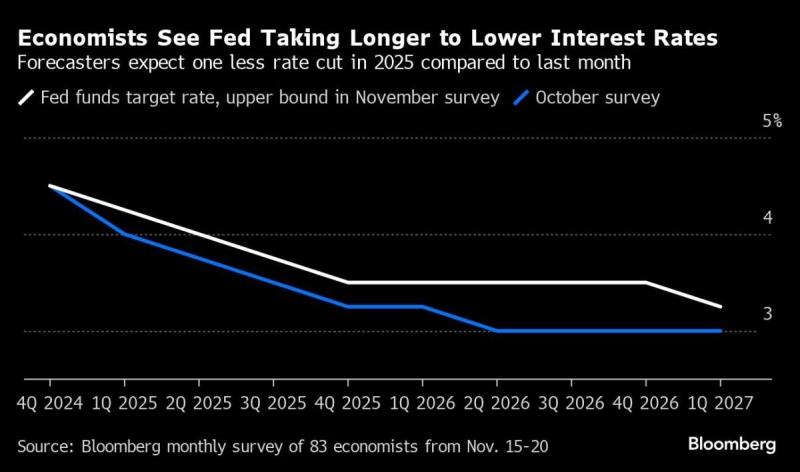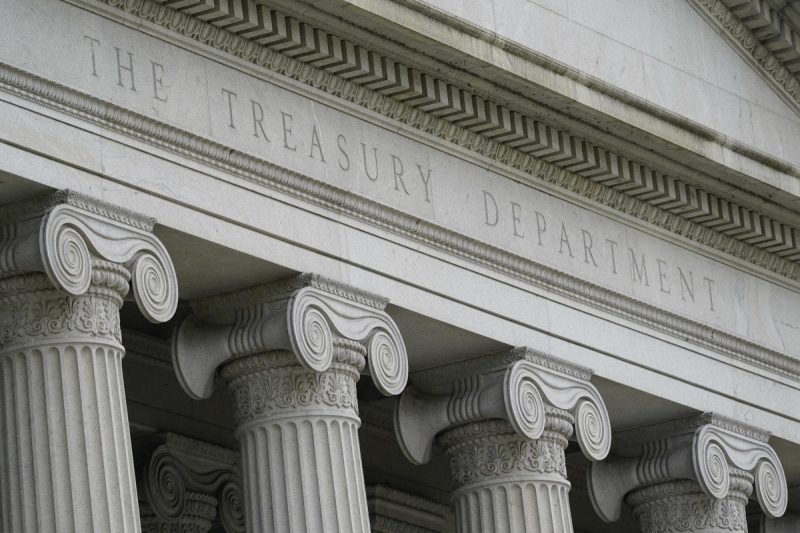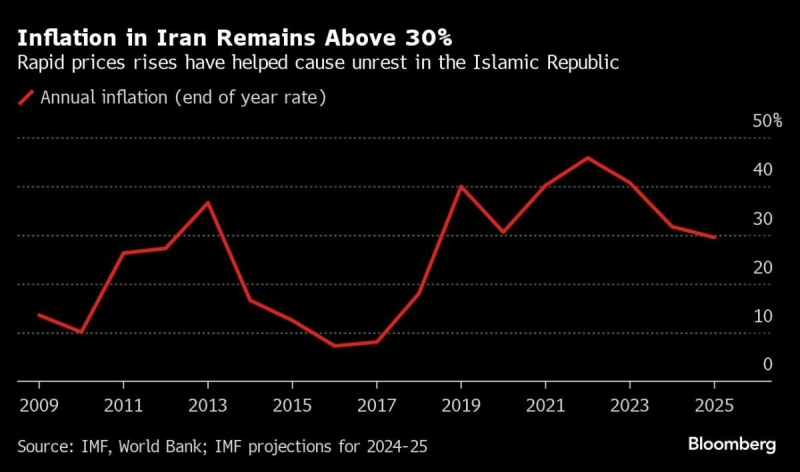
(Bloomberg) — Bonds extended Monday’s sharp losses as investors mulled the prospect of slower US interest-rate cuts, a trend that risks upending debt positions everywhere.
Most Read from Bloomberg
The 10-year yield rose as much as two basis points, back above 4.20% for the first time since July. The rate on equivalent German securities climbed four basis points, touching the highest level since early September. The rout also spread to Asia, where the yield on Australian benchmark debt surged as much as 16 basis points.
At the heart of the selloff lies a reassessment of the outlook for US monetary policy. Traders are paring back bets on aggressive easing given the US economy remains robust and Fed officials this week sounded a cautious tone over the pace of future rate decreases. Rising oil prices and the prospect of bigger fiscal deficits after the upcoming US presidential election are only compounding the market’s concerns.
“With less than two weeks now until the US elections, concerns about the fiscal outlook and its potential upward pressure on inflation have become more acute,” said Robert Dishner, senior portfolio manager at Neuberger Berman in London.
US 10-year yield jumped 10 basis point on Monday. The move steepened a key part of the US yield curve that’s been inverted since late 2022, with the gap between three-month and 10-year yields reaching the narrowest level in nearly two years.
“We will see 4.5% probably early next year” for US 10-year yields, said Ed Yardeni, founder of Yardeni Research, speaking in an interview on Bloomberg Television.
Traders have pared the extent of Fed interest-rate cuts through September 2025 by more than 10 basis points since the end of last week, according to swap pricing, which implies a Fed target rate between 3.50%-3.75%.
Apollo Management is among those seeing the central bank potentially keeping rates unchanged at its next meeting, while T. Rowe Price sees US 10-year yields climbing to 5% next year on risks of shallower rate cuts and as growth improves.
What Bloomberg Strategists say…
“Treasuries may struggle in the coming months, with a strong upward bias for yields as the US economy stays resilient and supply concerns grow”
Garfield Reynolds, Markets Live strategist
The outlook is also being repriced across other markets. Swaps are signaling the Reserve Bank of Australia will cut its benchmark rate cut by only about 50 basis points through to the end of August next year, half of what was priced in after the September policy meeting. Similarly, traders brought forward their forecast for the next Bank of Japan rate hike to June, compared with later than July seen last month.
Demand for long-term holdings of Japanese 10-year bonds, “which carry relatively high interest-rate risk, is likely to be limited” in this environment, Keisuke Tsuruta, a senior fixed-income strategist at Mitsubishi UFJ Morgan Stanley Securities Co. in Tokyo, wrote in a research note.
Emerging-market bonds also fell, with Indonesia’s five-year yield climbing seven basis points.
Not everyone expects the selloff to gain momentum. The Fed and Reserve Bank of New Zealand, among others, are in the midst of rate-cutting cycles, which should generate an underlying bid for bonds.
“We probably see a slight correction from here,” said Lucinda Haremza, vice president of fixed-income sales at Mizuho Securities in Singapore. There’s “risk of a stronger rally on rising Middle-East tensions or a Harris election win,” she said.
For now though, the combination of US debt supply, election hedging and markets front-running the risks of a Republican “red sweep” at the polls may see larger-than-usual fluctuations in Treasuries. Treasury volatility has climbed to the highest level this year, based on the ICE BofA Move Index that tracks anticipated swings in US yields based on options.
BlackRock Investment Institute is among those underweight shorter-maturity Treasuries.
“We don’t think the Fed will cut rates as sharply as markets expect,” strategists at the company including Wei Li wrote in a note. An aging workforce, persistent budget deficits and the impact of structural shifts such as geopolitical fragmentation should “keep inflation and policy rates higher over the medium term,” they wrote.
–With assistance from Haslinda Amin, Anchalee Worrachate and Alice Gledhill.
(Updates prices.)
Most Read from Bloomberg Businessweek
©2024 Bloomberg L.P.





